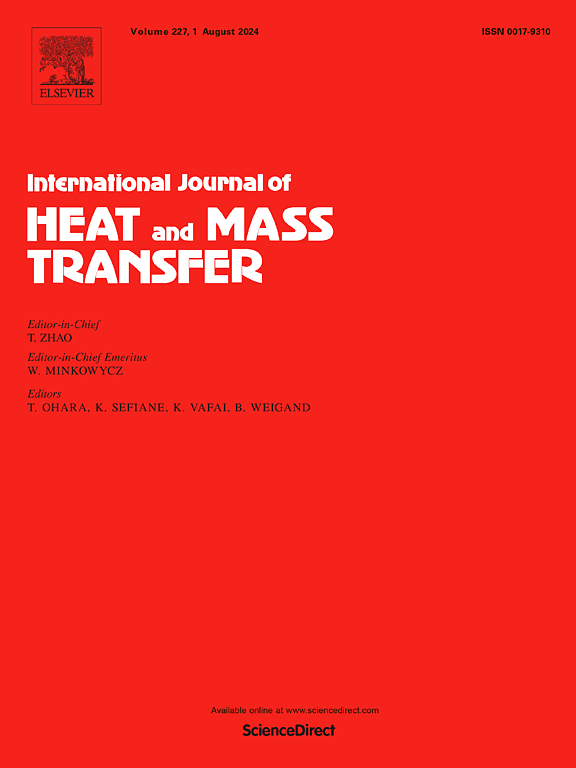同轴屏蔽气体下液滴撞击动力学引起的金属液滴重叠融合缺陷的抑制策略
IF 5.8
2区 工程技术
Q1 ENGINEERING, MECHANICAL
International Journal of Heat and Mass Transfer
Pub Date : 2024-11-24
DOI:10.1016/j.ijheatmasstransfer.2024.126488
引用次数: 0
摘要
同轴屏蔽气体下的高精度液滴重叠是实现自动化和轻质金属微液滴沉积制造的先决条件。遗憾的是,开放式屏蔽环境会使金属液滴直接暴露在大气中。由于冲击动力学、热力学和氧化的耦合效应,液滴重叠熔合的质量会受到影响。在这项研究中,基于熔滴撞击动力学的实验和理论建模,首次提出了在同轴屏蔽气体下抑制熔滴重叠熔合缺陷的策略。结果表明,在较低的屏蔽气体速率下,由于氧化膜的自限制效应,熔滴的回缩、反冲和振荡会减弱或消失。这限制了改进模型在较低屏蔽气体供应率下预测液滴扩散因子的准确性。在较低的屏蔽气体供应率下,液滴动态行为的减弱会放大液滴重叠的长度和高度缺陷,这在较小的印刷步距下尤为明显。最后,建立了不同印刷参数的质量图谱,有效抑制了重叠缺陷,并通过冶金结合确保了熔合质量。这项工作可为开放屏蔽环境下的高质量金属微液滴沉积制造提供坚实的证据基础和理论指导。本文章由计算机程序翻译,如有差异,请以英文原文为准。

Suppression strategy for metal droplet overlapping fusion defects caused by droplet impact dynamics under coaxial shielding gas
High-precision droplet overlapping under coaxial shielding gas is a prerequisite for automated and lightweight metal micro-droplet deposition manufacturing. Unfortunately, the opening shielding environment exposes metal droplets directly to the atmosphere. Droplet overlapping fusion quality would be affected due to the coupling effects of impact dynamics, thermodynamics, and oxidation. In this study, based on experiments and theoretical modeling of molten droplet impact dynamics, a strategy to suppress droplet overlapping fusion defects under coaxial shielding gas was proposed for the first time. Results show that at lower shielding gas rates, molten droplet retraction, recoil, and oscillation would weaken or vanish due to the oxide film's self-limiting effect. This limits the improved model's accuracy in predicting the droplet spreading factor in lower shielding gas supply rates. The weakened droplet dynamic behaviors at low shielding gas supply rates would magnify the length and height defects of droplet overlapping, which is particularly evident at a small printing step distance. Finally, a quality mapping for different printing parameters is established, effectively suppressing overlapping defects and ensuring fusion quality through metallurgical bonding. This work could provide a solid evidence base and theoretical guidance for high-quality metal micro-droplet deposition manufacturing under an opening shielding environment.
求助全文
通过发布文献求助,成功后即可免费获取论文全文。
去求助
来源期刊
CiteScore
10.30
自引率
13.50%
发文量
1319
审稿时长
41 days
期刊介绍:
International Journal of Heat and Mass Transfer is the vehicle for the exchange of basic ideas in heat and mass transfer between research workers and engineers throughout the world. It focuses on both analytical and experimental research, with an emphasis on contributions which increase the basic understanding of transfer processes and their application to engineering problems.
Topics include:
-New methods of measuring and/or correlating transport-property data
-Energy engineering
-Environmental applications of heat and/or mass transfer

 求助内容:
求助内容: 应助结果提醒方式:
应助结果提醒方式:


